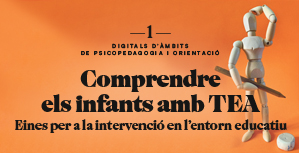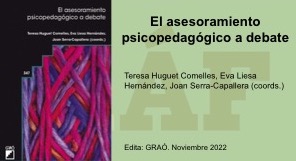Special education centers, support for inclusion
DOI:
https://doi.org/10.32093/ambits.vi53.1983Keywords:
Special education, Special schools, Inclusive education, Educational change, Inclusion resource center, Teacher trainingAbstract
Policies in favor of inclusive education require a reconsideration of the role and structures of special schools. This article first looks at the situation from an international perspective. There is an agreement on the need to overcome the historical gap between special and ordinary education, and to propose new roles, new approaches and perspectives to achieve a unique education system that is sensitive to the diversity of students' needs. Although the position is not unanimous, most countries are inclined to consider special schools as centers of excellence in the care and education of students with more extensive support needs and at the same time in organizations that support and promote inclusive education in the community where they are located.
Secondly, the project of transformation of special schools that DINCAT led and promoted in Catalonia in the beginning of 2016 is presented. The objectives of the project were, on the one hand, to promote a change in the understanding of special schools staff that would translate into a change in practices, through reflection, training and accompaniment; on the other hand, helping the schools to become part of an inclusive system in the community in which they are (neighborhood, town, county); in short, to become resource centers for inclusion.
Finally, the CEEPSIR ESPIGA-EAP program, promoted by the EAP of the Alt Penedès and the Delta-Espiga School, is presented. This program was born with the purpose to move to an inclusive school under conditions of equality and equality of opportunities. The main objective of this program is to accompany schools with a protocol of good educational practices to respond to students with more support needs.
References
Agran, M., Jackson, L.,Kurth, A., Ryndak, D., Burnette, K., Jameson, M., Zagona, A., Fitzpatrick, H., i Wehmeyer, M. (2020).Why aren’t students with severe disabilities being placed in general education classroom: Examining the relations among classroom placement, learner outcomes and other factors. Research and Practice for Persons with Severe Disabilities, 45, 4-13.
Ainscow, M. (2007). Toward a more inclusive education. Where next for special schools? A R. Cigman (Ed.), Included or excluded? The challenge of the mainstream for some SEN children (pp., 128-139). London: Routledge.
Baker, J. (2007). The British Government’s strategy for SEN: implications for the role and future development of special schools. Support for Learning, 22, 72-77.
Baker, J. (2009). Special school headship in times of change: impossible challenges or golden opportunities? British Journal of Special Education, 36, 191-197.
Brown-Chidsey, R. i Bickford, R. (2016). Practical handbook of multi-tiered systems of support. Building academic and behavioral success in schools. New York: The Guilford Press.
Decret 150/2017, de 17 d’octubre, de l’atenció educativa a l’alumnat en el marc d’un sistema educatiu inclusiu (DOGC núm. 7477, de 19/10/2017).
Department of Education (2006). The Future Role of the Special School. Ireland.
European Agency for Development in Special Needs Education (2013). Organization of Provision to Support Inclusive Education. Literature review. Odense, Denmark: European Agency for Development in Special Needs Education.
European Agency for Special Needs and Inclusive Education (2015). Agency Position on Inclusive Education Systems. Odense, Denmark. www.european-agency.org/publications.
European Agency for Special Needs and Inclusive Education (2017). Herramienta de autorreflexión para entornos de educación inclusiva en la infancia temprana. (E. Björck-Åkesson, M. Kyriazopoulou, C. Giné y P. Bartolo, eds.). Odense: Dinamarca
Florian, L. (2019). On the necessary co-existence of special and inclusive education. International Journal of Inclusive Educations, 23, 691-704.
Font, J., Castells, M. i Ramon, D. (1016). PACBAL (Prova d’avaluació dels processos bàsics de l’aprenentatge de la lectura). Vic. Escola d’Educació Especial l’Estel.
Font, J. I Giné, C. (2016). Educació especial: Un pas endavant. Reptes. Revista d’Educació Especial i Inclusiva, 1, 26-32.
Font, J. I Simó-Pinatella, D. (2017). El FACTS: Una entrevista per a l’avaluació funcional. Reptes. Revista d’Educació Especial i Inclusiva, 2, 46-49.
Font, J., Simó-Pinatella, D., Alomar, E., Giné, C., Adam, A.L., Dalmau, M., …i Mas, J. (2013). El rol de los centros de educación especial en Catalunya: perspectivas de futur. Siglo Cero, 44, 34-54.
Fuchs, D., Fuchs, L.S. I Stecker, P.M. (2010). The “blurring” of special education in a new continuum of general education placements and services. Exceptional Children, 76, 301-323.
Giangreco, M.F. (2020). “How can a student with severe disabilities be in a fifth-grade class when he can’t do fifth-grade level work?” Misapplying the least restrictive environment. Research and Practice for Persons with Severe Disabilities, 45, 23-27.
Gibbons, K., Brown, S. i Niebling, B.C. (2019). Effective universal instruction. An action-oriented approach to improving Tier 1.New York: The Guilford Press.
Harrison . P.L. i T. Oakland T. (2003). ABAS-II Sistema para la Evaluación de la Conducta Adaptativa. Madrid: TEA Ediciones
Head, G. i Pirrie, A. (2007). The place of special schools in a policy of inclusion. Journal of Research in Special Educational Needs, 7, 90-96.
Hoover, J.F. i Patton, J.R. (2008).The role of special educator in a multitiered instructional system. Intervention in School and Clinics, 43, 195-202.
Hornby, G. (2014). Inclusive special education. Evidence-based practices for children with special needs and disabilities. New York: Springer.
Kauffman, J.M., Anastasiou, D. i Maag, J.W. (2017). Special education at the crossroads: A crisis of identity and the need for a scientific reconstruction. Exceptionality, 2,139-155.
Llei 12/2009, de 10 de juliol, d’educació (DOGC núm. 5422, de 16/7/2009).
McDonnell, J. i Hunt, P. (2014). Inclusive education and meaningful school outcomes. A M. Agran, F, Brown, C. Hughes, C. Quirk i D. Ryndak (Eds), Equity and full participation for individuals with severe disabilities. A vision for the future (pp. 155-176). Baltimore: Paul H Brookes.
McIntosh, K. and Goodman, S. (2016). Integrated multi-tiered systems of support. Blending RTI and PBIS. New York: The Guilford Press.
McMenamin, T. (2011). The tenacity of special schools in an inclusive policy environment: The New Zeeland situation 1996-2010. Support for Learning, 26, 97-102.
Norwich, B. (2008). What future for special schools and inclusion? Conceptual and professional perspectives. British Journal of Special Education, 34, 136-143.
Norwich, B. (2013). Addressing tensions and dilemmas in inclusive education. Living with uncertainty. New York: Routledge.
Norwich, B. i Gray, P. (2007). Special schools in the new era: conceptual and strategic perspectives. A B. Norwich (ed.), Special schools in the new era: how do we go beyond generalities? Paper 2, Special Educational Needs Policy Options Group 6th Series. Tamworth: NASEN.
Pepper, J., Weitzman, E. (2003).Hablando nos entendemos los dos. Toronto: Hanen.
Rogers, S.L., Dawson, G. i Herrera Gutiérrez, G. (2015). ESDM. Lista de verificación del currículo del modelo Denver de atención temprana. Ávila: Autismo Ávila.
Rojahn, J., Matson, J.L., Lott, D., Esbensen, A.J. i Smalls, Y. (2001). The Behavior Problems Inventory: An instrument for the assessment of self-Injury, stereotyped behavior, and aggression/destruction in individuals with developmental disabilities. Journal of Autism and Developmental Disorders, 31, 577-588.
Rose, J. (2012). Building bridges with others schools: educational partnership in separate settings in England. Support for Learning, 27, 84-90.
SEN Policy Opinions Group (2007). Special schools in the new era: how do we go beyond generalities? Journal of Research in Special Educational Needs, 7, 71-89.
Schalock, R. L., Borthwick-Duffy, S. A., Bradley, V. J., Buntinx, W. H., Coulter, D. L., Craig, E. M., …i Yeager, M. H. (2010). Intellectual Disability. Definition, classification and systems of supports. Washington: AAIDD. Traducció al castellà: AAIDD (2011). Discapacidad Intelectual. Definición, Clasificación y Sistemas de Apoyo. Madrid: Alianza Editorial.
Sundqvist, C., Björk-Aman, C. i Ström, K. (2019). The three-tiered support system and the special education teacher’s role in Swedish-speaking schools in Finland. European Journal of Special Needs Education, 34, 601-616.
NU (2006). Convención de las Naciones Unidas sobre los derechos de las personas con discapacidad. Recuperado de: http://www.un.org/spanish/disabilities/
UNESCO (1994). Declaración de Salamanca. Conferencia Mundial sobre Necesidades Educativas Especiales. Acceso y calidad. Madrid: UNESCO/ Ministerio Educación y Ciencia.
NESCO (2014). Teaching and learning: achieving quality for all; EFA global monitoring report, 2013-2014. UNESCO: Paris.
Wehmeyer, M.L. i Shogren, K.R. (2017). Handbook of research-based practices for educating students with intellectual disability. New York. Routledge.

Downloads
Published
Issue
Section
License
The authors maintain their copyright and give the right to the first publication of the work to the journal, registered under a Creative Commons Attribution-Non Commercial-NoDerivs license. This license allows others to download the works and to share them with others as long as they credit the author, but it does not allow for any kind of modification or commercial use.














